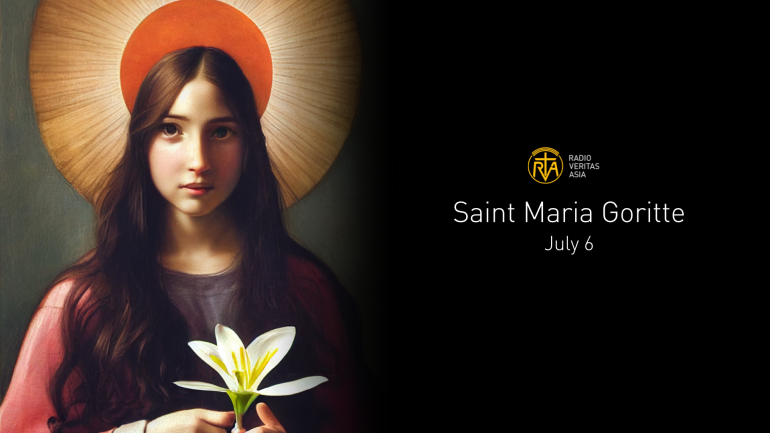Maria Goritte: the child martyr who died in the same year Teddy bear was born

In 1902, the Teddy bear was born. This popular children's stuffed toy was named after Theodore Roosevelt, who was the first US president to ride an automobile in the same year.
Also in 1902, Italy was still a monarchy ruled by King Victor Emmanuel III. A law was enforced limiting the working day for women to 11 hours. And children under the age of 12 were prohibited to work.
At the time, Maria Teresa Goritte was only 11 years of age. She could not join her mother and older siblings to work on the farm.
Maria was born on October 16, 1890, in Corinaldo, a town and comune in the province of Ancona in central Italy more than 280 kilometers northeast of Rome.
His father, Luigi Goritte, a farm worker, moved them from Corinaldo to Ferrier di Conca near Anzio, another town and commune, about 50 kilometers south of Rome.
When she was just five years of age, her family had become extremely economically challenged. They gave up the land they tilled and left home. Her parents fed them by working for other farmers.
In 1896, they moved to Colle Gianturco, about 80 kilometers from Rome. Then they moved again to Le Ferriere, a town and commune in the province of Piacenza.
In Le Ferriere, they lived in a building known as La Cascina Antica together with another family: the Serenellis.
Her father died of malaria when she was just nine years old, leaving her mother, Assunta Carlini, to work to feed eight of them.
Luigi and Assunta had seven children; Maria was the third among them.
Maria prepared their food while her mother and siblings worked in the fields. She also sewed clothes, cleaned the house, and looked after Teresa: the youngest among the seven.
July 5, 1902. Her mother and siblings were out in the field. Alessandro Serenelli, 12 years old, approached Maria, who was taking care of Teresa in the house.
Alessandro had previously been making sexual advances at Maria that she resisted.
He put out a 10-inch awl and threatened Maria he would hurt her if she would turn him down.
When Maria refused for the nth time, he pierced the awl into her body 14 times.
As she was assaulted, Maria fought and screamed.
"No! It is a sin! God does not want it!"
Allesandro strangled her after she refused. Maria said she would choose to die rather than give in to Alessandro. Then he started stabbing her.
Maria tried to flee, but Alessandro stabbed her three times.
The awl tore her throat, heart, lungs, and diaphragm.
Maria was rushed to a hospital in Orsenigo, a town in the province of Como.
The surgeons wondered why Maria was still breathing after all those lethal wounds she sustained from the attack.
About 24 hours after the assault, Maria died. She forgave Allesandro and said she wished to see him in heaven before she breathed her last.
Before the attack, Allesandro had also attempted to rape her. But Maria was scared to disclose it as he threatened that he would hurt her if she did.
He escaped, but the authorities caught him.
He was sentenced to life in prison. But since he was a minor, his time was commuted to 30 years.
While serving time in prison, Alessandro admitted he was not able to accomplish his sexual advances on Maria.
Maria died a virgin.
Alessandro was converted when Monsignor Giovanni Blandini visited him in jail. He asked for forgiveness from Maria.
He became a lay brother of the Capuchin. He died in 1970 at the age of 87.
Maria did not have the chance to hear, and even see, a Teddy bear as she died in the same year the stuffed toy was born.
She was beatified on April 27, 1947, at Saint Peter's Basilica by Pope Pius XII. Canonized on June 24, 1950.
Her remains are kept in the crypt of the Passionist Basilica of Nostra Signora delle Grazie e Santa Maria Goretti in Nettuno, Italy.
She is the patron saint of the sexually abused, and teenage girls.
Her feast day is celebrated on the sixth of July.
Radio Veritas Asia (RVA), a media platform of the Catholic Church, aims to share Christ. RVA started in 1969 as a continental Catholic radio station to serve Asian countries in their respective local language, thus earning the tag “the Voice of Asian Christianity.” Responding to the emerging context, RVA embraced media platforms to connect with the global Asian audience via its 21 language websites and various social media platforms.












